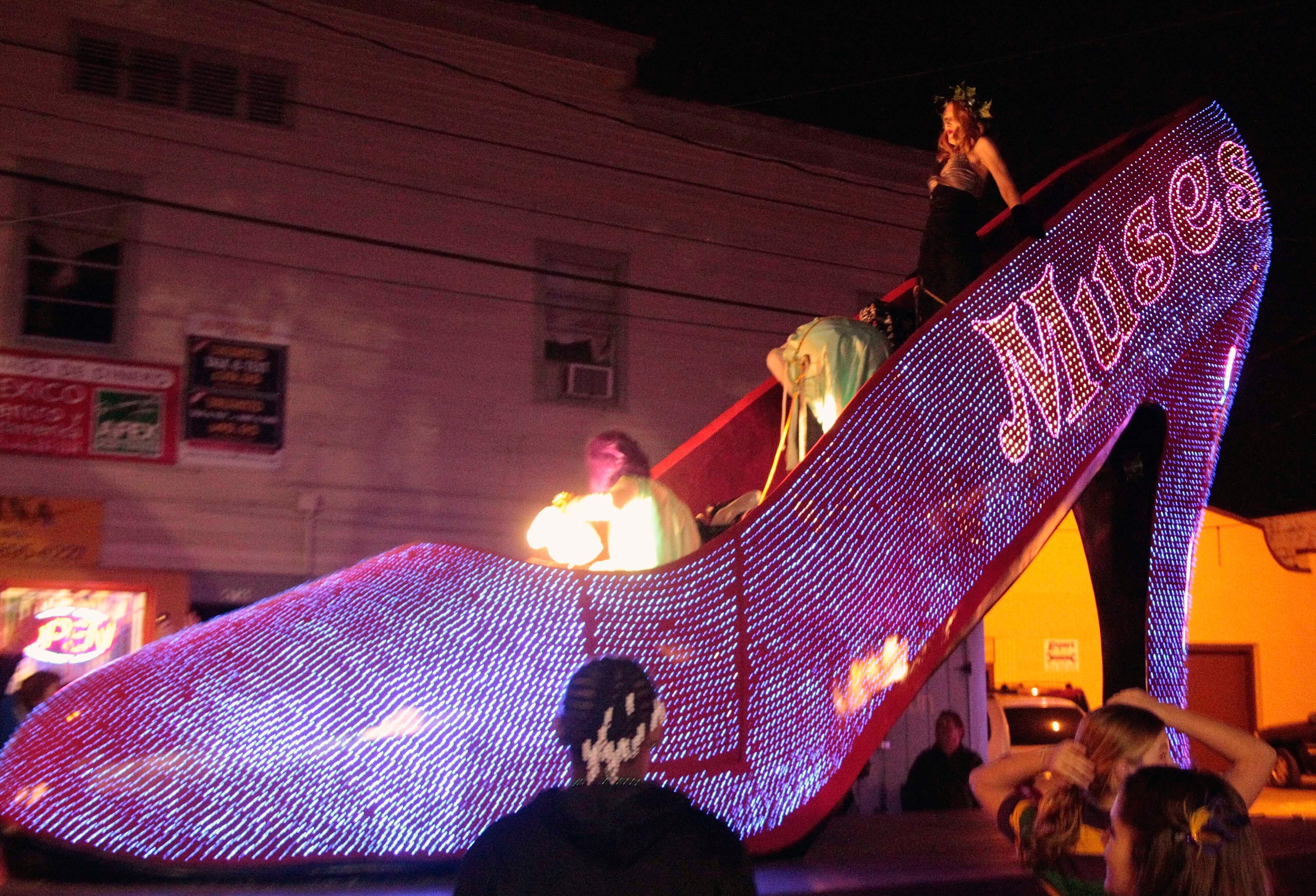Spreading the joy: Longer parade routes OKd for Mardi Gras
COVID-19 precautions wiped out most New Orleans’ Mardi Gras festivities in 2021, and a shortage of police officers forced the city to shorten routes for some of its lavish seasonal parades in 2022

Your support helps us to tell the story
From reproductive rights to climate change to Big Tech, The Independent is on the ground when the story is developing. Whether it's investigating the financials of Elon Musk's pro-Trump PAC or producing our latest documentary, 'The A Word', which shines a light on the American women fighting for reproductive rights, we know how important it is to parse out the facts from the messaging.
At such a critical moment in US history, we need reporters on the ground. Your donation allows us to keep sending journalists to speak to both sides of the story.
The Independent is trusted by Americans across the entire political spectrum. And unlike many other quality news outlets, we choose not to lock Americans out of our reporting and analysis with paywalls. We believe quality journalism should be available to everyone, paid for by those who can afford it.
Your support makes all the difference.COVID-19 precautions wiped out most New Orleans' Mardi Gras festivities in 2021, and a shortage of police officers forced the city to shorten routes for some of its lavish seasonal parades in 2022.
Now, city officials, and business owners are celebrating plans to let the good times roll on longer routes -- and in front of businesses that welcome the crowds -- with security bolstered by neighboring police agencies.
Mayor LaToya Cantrell's official announcement Monday that parade routes were being lengthened was welcome news to Staci Rosenberg, a founder of the Krewe of Muses. It means the all-female organization and its signature floats — including a giant stilletto-heeled pump swathed in color-changing lights — will be able to roll again on Magazine Street. The thoroughfare lined with small shops, century-old cottages, bars and restaurants runs through neighborhoods that gave the parade what Rosenberg described as a more intimate, family-friendly atmosphere.
“It was important to send a sign, I think, to the world that we’re back,” Rosenberg said of plans to restore the longer route. “We’ve recovered from all kinds of things — the pandemic, the labor shortage, the police shortage."
It also means bolstered business at Le Bon Temps Roule, a well known around-the-clock neighborhood bar on Magazine Street. Co-Owner Joe Bikulege said it was closed for 17 months because of the pandemic. Mardi Gras business, he said, usually enables him to put aside money to pay for taxes, insurance, building improvements and other emergencies.
“There's a lot of people that make their living off Mardi Gras,” he noted.
Cantrell made the announcement, heralded by a brass band, at Gallier Hall, a 19th-century Greek Revival building that once was the seat of city government. She was joined by interim Police Superintendent Michelle Woodfork and, via video hookup, Sheriff Susan Hutson — who worked to broker agreements with other Louisiana law enforcement agencies to beef up manpower.
It marked a chance for Hutson and Cantrell, both of whom are elected officials, to bolster their political fortunes at a time when both have been under pressure. Cantrell, in her second term, is facing a recall effort a amid rising crime, unhappiness over delays in street projects and trash pickup, and questions about her use of a city-owned French Quarter apartment. Hutson, who took office last year, inherited a long-troubled city jail and is embroiled in political and legal battles over construction plans and security issues.
Manpower shortages have affected police departments around the country since the beginning of the pandemic and the nationwide protests over the murder of George Floyd. Various estimates put the number of New Orleans police officers at around 900 to 950, about 400 short of the ideal at any time of year.
Exactly how many police officers and sheriff's deputies from other jurisdictions will help with the parades wasn't immediately clear. A spokesperson for Hutson's office said in an email that agreements with other agencies were still being finalized ahead of the major parades.
Carnival season begins each year on Jan. 6 and picks up steam with a growing list of balls and parades. It reaches a climax in the final two weeks before Mardi Gras, or Fat Tuesday, the day before Ash Wednesday and Lent. Mardi Gras falls on Feb. 21 this year.
Last year, major parades were limited to a route that took floats, marching bands and walking clubs down historic St. Charles Avenue to the downtown area. The restoration of longer routes means the Krewe of Thoth can again roll by New Orleans' Children's Hospital after a nearly three-year absence.
It will be a return welcome by Dr. Scott Macicek. “It's scary when your a child and you're in the hospital,” Macicek said. “Having as many joyful experiences as we can create is important.”
Joe Bikulege, co-owner of Le Bon Temps Roule. The bar is open around the clock on Magazine Street — a busy thoroughfare left off last year's route. Bikulege said money made during Mardi Gras bolsters income and helps pay for insurance, taxes and maintenance on his building.